Home>The Other Europe. Int
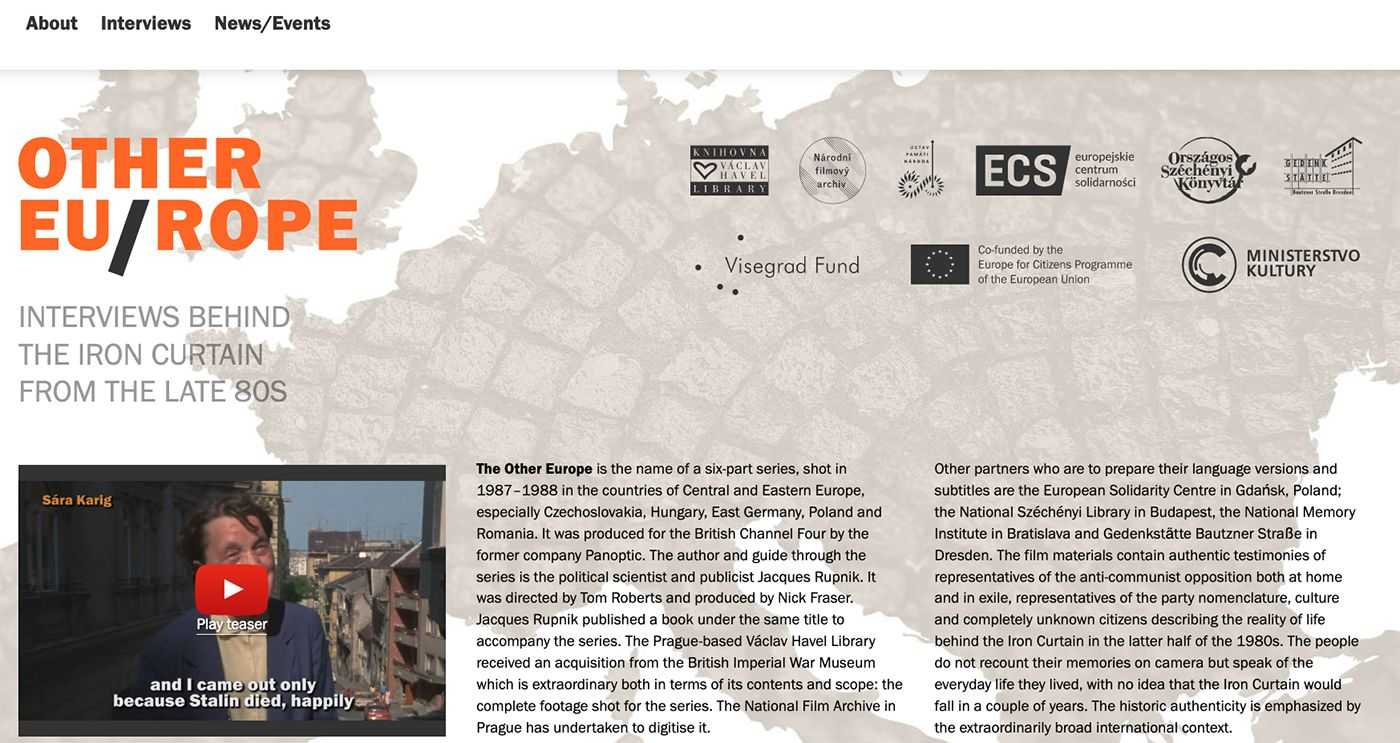
29.06.2021
The Other Europe. Int
Interview with Jacques Rupnik
Just before the fall of the Berlin Wall, Jacques Rupnik was involved in the making of The Other Europe, a six part series documentaries filmed in Central and Eastern Europe for the UK’s Channel Four. He also published a book entitled The Other Europe. The archives of these documentaries (collecting testimonies from communist officials as well as opponents of the regime, artists, intellectuals and ordinary citizens) will be preserved in Prague under the auspices of the Vaclav Havel Library and made available online. Many of the interviews are already posted on The Other Europe website.
Here, Jacques Rupnik tells the story of this incredible adventure, from the making of the documentary to the fight to preserve its archives and ensure they remain accessible.
Can you tell us about the origins of "The Other Europe"?
Between 1986 and 1988 I was involved in the making of a documentary for Channel 4 in the UK. The goal was to present the situation in Central and Eastern Europe at a time when attention was mainly focused on the Gorbachev phenomenon. Most of the Western media covered Central and Eastern Europe mainly in relation to Gorbachev’s reforms. So, we wanted to take a different perspective, to make a film that did not show the Gorbachev effect on Central and Eastern Europe but rather the Gorbachev effect seen from inside these countries, and preferably from below.
The idea was not to film country by country, which would have been simpler but would have given the impression of an encyclopaedia (we would have talked about the seizure of power, and then life under Stalin, then the era of de-Stalinization), which would have been very repetitive even emphasising the differences between the countries. We therefore chose to work thematically, were fortunate to have considerable means at our disposal for our project, which we took two years to complete. Our travels began in early 1987 and continued until late summer or early autumn 1988. We trekked all over these countries, but we then had to make certain choices in editing the film. For example, we went to Albania, but in the end, we did not include Albania in the film, nor indeed Yugoslavia. The main difficulty was that because we had chosen a thematic approach we would have had to systematically repeat, “however, things were different in Albania because the Hoxha system remained staunch totalitarianism”. The same goes for the Yugoslavian system which was specific and would have deserved its own documentary project. However, we did film in Albania unofficially, as tourists, and the archives are unique. They contain images of Tirana filmed in 1987, a ghost town, with no cars, nothing.
So that is the hard part. You can’t use all the material you’ve collected, so you have to focus on what matters. You have to define the space that you want to examine, define the field, the lines of questioning. And then come the questions about access.
How did you go about your work? You must have encountered many difficulties?
Of course, access is the most difficult issue. Moreover, you do not get the same access to sources depending on the country. Here we are in a research institution. Back then, a researcher, going around a country like Poland, just needed a pencil and notebook in his pocket. There were no computers or internet and they would have been immediately confiscated anyway. But although researchers did not need much in the 1980s, the situation was different for documentary makers. Because filming is a public activity.
You talk about “us” – were you part of a team?
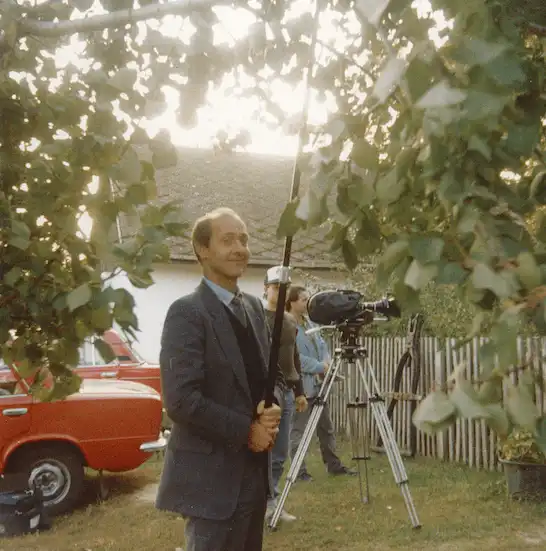
Yes of course, we were a team. The film was “written and presented by Jacques Rupnik”. The producer was Nick Fraser who had his own production company and who managed the project for Channel 4, which then was a new television station and quite avant-garde, a bit like France Culture for television, or ARTE. Nick Fraser later became director of documentary films at the BBC for 25 years; the top reference in the field.
You, of course, needed a director, somebody who knew how to make films. Nick Fraser chose Tom Roberts who was a major news reporter for Panorama,(1) then considered BBC’s best current affairs programme, which still exists in fact. Roberts had travelled all around the world – Nicaragua, the Middle East; you name any of the places where there were conflicts and upheavals Tom Roberts was there and had a rare talent for getting access to all parties involved. He somehow always managed to send the best report from wherever to Panorama just before the deadline.
However, we were a team, working in very different circumstances and that is where our trouble started. You have an “author”, a producer, and a director. I knew a thing or two about Central Europe under communism but nothing about how to make a film. On the other hand, the producer and director knew about film-making, but had never been to Central Europe. Moreover, the director was a specialist on reporting rather than documentaries.
He was used to filming action, he interviewed people on barricades, or in hiding. Personally, I had worked in completely different conditions and we had to learn to work together, that was the unusual and difficult part of the experience.
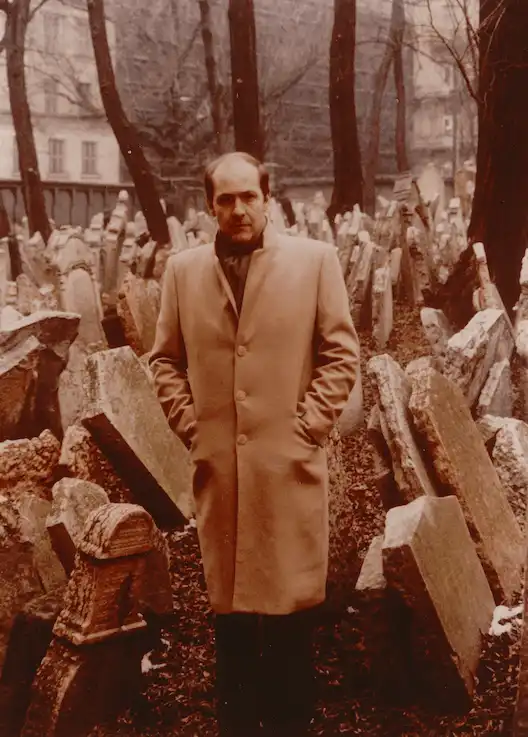
During our first ‘reconnaissance’ trip to East Berlin in early 1987, I remember that we were in a hotel on Alexander Platz. Everything was grey and
depressing and we were wondering what we could possibly film. After three days of meting with some officials whom we asked for authorisation to film certain places or things we were granted a few rare authorisations. We were able to visit an agricultural cooperative, we went to a Kombinat, the name given to the big factories, near Dresden. After twiddling our thumbs for two days, and being granted next to nothing, my new partner, the director, who I did not really know yet said, “Jacques, where are we? What is happening? What’s the story?” My response was, “Nothing. Nothing is happening and that is what we have to film.” He thought I was trying to be clever, and we had quite a heated exchange. I tell that story because it perfectly reflects the problem that we were facing. How were we to proceed? How could we make a documentary in a country where “nothing” was happening, where apparently nothing was happening? Where political or public events were scheduled well in advance, every year the same.
We came up against this difficulty in Berlin, but it happened everywhere. We went to film in Prague where apparently “nothing” was happening again. I asked Vaclav Havel about it in an interview and he answered, “indeed, that is right, when foreigners arrive here, in Prague, they walk around and say ‘nothing is happening here, people are out walking, doing their shopping, going on weekends to their holiday homes, nothing is happening. What are they complaining about?” You’d have to live here to see what the conditions are really like, the mechanisms of control and repression, the price to pay for conforming, and also the price paid by those who refuse to fall into line.
So, we had to find a way of showing these mechanisms of social control, which are not immediately visible. That was the first difficulty we encountered when we tried to film life in Central Europe at that time, but I think that it is true for other regimes like this. It was not possible to film like a reporter, and understandably our director got rather frustrated.
How did you eventually overcome this difficulty?
In fact,—and this may sound as a heresy to some—you have to start with a preconceived idea. If you don’t want to limit yourself to a superficial report on “people walking around Prague, going about their business, etc.” you have to already have your interpretive tools.
How did the waning communist regime—back then we described it as “tired”, “post-totalitarian”—function? What was it that allowed this functioning? Its sources of strength and weakness. What kinds of interpretation could we propose?
That is when you understand that the word documentary aquires a specific meaning. In fact, when you film in these conditions, you have to know in advance what you want to show and want to film. Some people would say, “you have preconceived ideas”, “cognitive bias”. Yes, absolutely.
Isn’t that the reason that Channel 4 asked you to participate in this film?
That was indeed the main reason I was recruited. The project had, in fact, been offered to Norman Stone, a professor of Modern history at Oxford, but he refused saying, “it is not for me, I cannot see myself outside a Bulgarian biscuit factory commenting on the vagaries of socialist planning. But I can recommend the best person for this project”, and he gave my name.
This also coincided with the fact that I was invited to participate in a television programme in England in the Spring of 1986, I think, where I had an hour-long debate on Perestroika with Fedor Burlatsky, one of Gorbachev’s advisers. I had tried to point to the contradictions and limits of Gorbachev’s desire for reform. I argued that it was not possible to reform the economy without reforming the political system, which they had already started to see, and that if you want to reform politics, and abolish censorship with glasnost, you’re on a slippery slope and you’re forced to open up the country, to loosen up the regime’s grip on society. That is what happened with the Prague Spring in 1968…
The combination of Norman Stone’s recommendation, my participation in the debate and my prior experience with the BBC,(2) just after my PhD, meant that there were a few people in London who knew me, and I was called on to make this documentary.
How did things go when you arrived in the Eastern part of Europe?
Arriving in Eastern and Central European countries to film is not like going into the great unknown, which does not mean unexpected things cannot happen, that you might not have the possibility of filming things according to plan, but get a chance to shoot the unexpected.
You have your thematic outline you know that you’re making a film about power. One of the six films is about that. It was called “Them” after the book written by the Polish writer Tereza Toranska, on the men in power, the communists, “them”. There is also a film about the economy—the (mis)management of a planned and completely dilapidated economy of scarecity? We have a film about culture and counterculture and its connection with dissidents. The final film is called “Reform and Revolution”.

You need a certain number of elements on each theme. They may be interviews – and that was okay because my address book was up to date from traipsing all over the region for many years. I had pretty much read everybody, so I had what we needed in that respect, but we also needed locations and situations to illustrate our comments. For that, we had to have authorisation to film in places that we chose. In some countries that was fairly easy to obtain, for example in Hungary or to a lesser extent in Poland. In Hungary we were able to film nearly everything that we wanted to on the condition that we paid for it. I was even able to interview dissidents, including the well-known writer György Konrad or a student activist, a certain Viktor Orban... In other countries, authorisations were given one by one, like in Czechoslovakia. When we first applied, we received an answer to our request for authorisation that greatly amused the producer, who in fact pinned it up on the wall of his office, a three-line letter saying “your film project in our country is not in the interests of the Czechoslovakian Republic.” Of course, this response was perfectly grotesque, the idea that a film had to be in the interests of the state where we intended to film! That an English film had to serve the interests of socialist Czechoslovakia! Czechoslovakian authorities had at first refused permission to film, but as I was the narrator it was impossible to make these documentaries without including Prague, where I was born. One year later we applied again, in 1988, asking for permission for the most minimal filming: the Charles Bridge, Wenceslas Square, and the Lucerna concert hall, which used to belong to the Havel family, an important family connected with arts and culture.
We were given permission to film these three places. And then it was up to us to add to that. Which we did by arranging an interview with Vaclav Havel at his home, by unofficial means, but only once we had completed our official mission, and just before leaving the country.(3)
How were you able to successfully get around restrictions and constraints?
We could try to do what worked with the Havel interview, sometimes it worked, sometimes not. We also outsourced an interview with a dissident at her workplace in Prague.
The interview with Havel was absolutely fascinating. He tried to describe what he called the post-totalitarian system.
“I personally understand the totalitarian system as being a system based not only on the direct violence of power groups, that is the police, the army and so on. In various third-world countries every so often they have coups, right-wing, left-wing, and they have the character of a dictatorship of some power group which has control over the army and the police and so on, it takes over the rule and will not let anyone else govern until someone else carries out another coup. The totalitarian system is something completely different, it actually pervades all spheres of society’s life in sophisticated, complicated and indirect ways. Normal dictatorships, the classic ones or so-called authoritarian regimes, always encroach on a certain field only, but the totalitarian system must control everything, from economic life, spiritual life, private life, and it has built sophisticated and extensive mechanisms for permeating throughout society and actually forcing it to participate in it, because who is actually keeping the system viable? Well, to a certain degree all of us, aren’t we?” (4)
That conversation is extremely interesting, including for political scientists. Other interviews are testimonies in which people talk about their experiences, for some in the 1940s and 1950s, the trials, prisons, etc. but we also had interviews conducted with intellectuals like Zdena Tominova - writer and spokesperson of Charter 77 - Starkova, Konrad, Geremek, Kuron, and other people living in exile who presented their philosophy, their analysis. It was particularly relevant and interesting to try to incorporate a reflection on the nature of the political system and its evolution into a documentary like this.
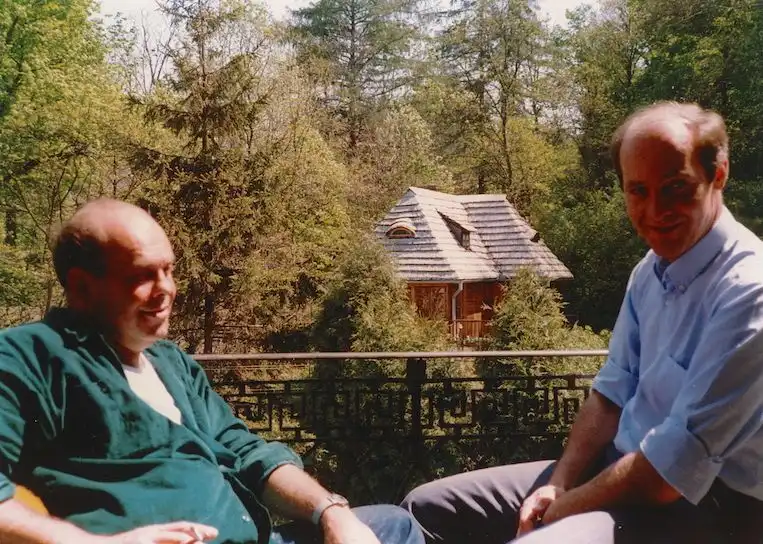
You arrive in a country with your conception, you try to pin down what you can film to make sense or correct this conception. You buy archives, because in Central and Eastern Europe archives were for sale at different prices depending on the country. In Romania they sold us all the videos from their television news, the videos of Ceaușescu’s meetings, for a fairly high price. Once the images were bought, we could use them the way we wanted. I think we did so effectively. In any case the archives are fascinating for anyone who wants to understand the remnants of a traditional totalitarian system which relied a great deal on images and film, “the most important art” according to Lenin. Sometimes the images may seem laughable, such as those showing crowds of young enthusiastic supporters, chanting the name of the Romanian “Conducӑtor”, and waving flags everywhere, because you guess the enthusiasm is faked and all the other countries had already abandoned theses kind of rallies or shows. Faith may be gone, but the ritual remains.
So you have the archives, the images and interviews that you filmed, and with that you try to make a film when you get back. It is the opposite of a news report; not just a description it is a reconstruction of reality. That is why we had no pretence to “objectivity” which is usually associated with news reporting. There is also a classic discussion about the Weberian notion of objectivity in the social sciences; it is an important notion, highly debatable and much debated. It is important to distinguish the work done by a researcher studying a region and a political system, who is using certain sources and concepts that he considers relevant, from a documentary that draws on his research but does not have a claim to “objectivity”, which I would distinguish from intellectual honesty. This is possible but must be made explicit. Firstly, there is a narrator, who clearly says: “here is the evidence, this is how I see things. You have the right to think otherwise, but this is how things stand for me. I am not manipulating the facts; I am providing a reading and an interpretation of them.”
So your documentaries are a construction, or even a reconstruction which was imposed on you by the filming conditions?
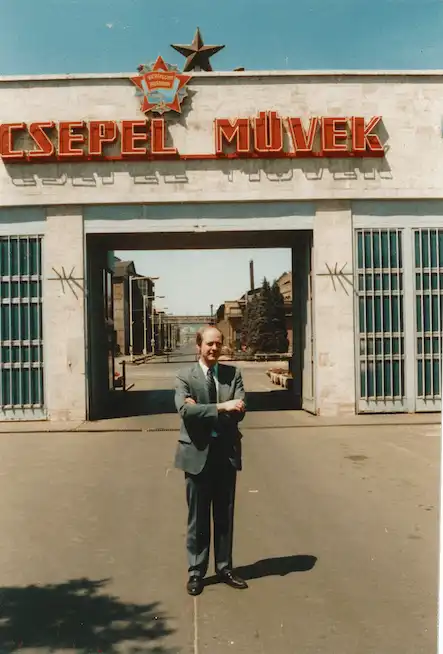
Indeed, in that sense our documentaries are quite different from what is commonly understood by that term. Clearly, today everybody films everything, constantly. Leaving aside surveillance cameras, with a mobile phone, you can film everything. The world of infotainment and social networks feeds on what some people consider “citizen’s journalism”. Our approach had to be completely different not just because of the regime’s control over information but because this was a world where mobile phones did not exist, Internet did not exist. Telephone lines, when they worked, were not reliable and were often tapped. Not everyone had a telephone, and even if they did, they did not necessarily wish to be called from overseas. We were in a system where communication was very, very restricted and controlled.
It would have been strictly impossible to make a film like those of the American filmmaker I greatly admire, Frederick Wiseman, who films institutions for hours, freely and the without a narrator or mediation and presents you a three or four hour long immersion in that “reality”. However, even that reality, as he admits, is ultimately edited, “constructed” in the cutting room.
In contrast, we tried to make a film in the conditions of unfreedom. Today, people have trouble imagining this, because we can film everything, and interviews can be conducted on your tablet by Zoom. But back then we didn’t even use video, our camera was obvious, the equipment was heavy and conspicuous. The conditions we worked in forced us to plan everything in advance, to make sure each shooting sequence was properly prepared. We had to try to follow our plan, and think about where each particular shoot, or each interview, could fit, while obviously remaining open to whatever might come up.
What were some surprises or misadventures that happened during the filming?
There were , of course, many. I remember, for example, that we filmed in open-cut lignite mines in the GDR, which covered thousands of kilometres of nature that had been destroyed. A lunar landscape. The entire town of Hoyerswerda, near Dresden, was built around the industrial and mining complex. At the time 70,000 people lived there (today there are less than 20,000). We filmed the workers’ residences, the sports facilities, the school, the cultural centre where people came to dance on Saturday night. This was a company town, everyone’s livelihoods were linked to the factory, everyone seemed grateful to the factory for providing work and comfort. We filmed the factory, the town, people’s lives, and asked for authorisation to film an interview with the union leader. His assistants came to see us to know what we wanted to ask him specifically. I answered, “I want to ask you about wages, working conditions, working norms, things like that.” I gave him a few questions that I wanted to ask about the role of the union. So, we agreed, and we started to film. The union leader was sitting at the end of the table and I was across from him. Tom Roberts was a bit behind me with the camera.
I started by asking him easy questions, and then once he gave his routine answers, I asked him, “how would you compare the quality of life as an East German worker to that of a West German worker?” And then, you could see it in his eyes. He did not say anything, but his eyes spoke volumes. Then he bumbled something like “but why are you asking me that? Of course, we live much better here than workers in the West.” He tried to make up for it, but the damage had been done. I gave him a few elements of comparison, and he was really floundering. And then he got angry and he said, “listen, right, these are not the questions we agreed on, so stop filming”. The cameraman put the camera down on the table and I continued to ask him “why do you want to stop?” And then we had an exchange that was quite edifying in which he stated something like “I am not authorised to answer questions that are outside the framework we agreed on.” But during this exchange the camera that was on the table was actually still rolling. Ultimately, we did not use this interview in the film because we were forced to leave many things out and make choices. This man did not teach me anything new, but his behaviour did teach me something. He also would have taught the viewer that the idea of comparison with West Germany—which was an obsession for everyone in the GDR—was taboo.

We bought the permission to use exerpts from Schwarze Kanal which was an East German propaganda tv show designed to counter the West German television that was very popular. I conducted an interview with the presenter of this television show. Interestingly, the area where we were, near Dresden, was the only region in the GDR that did not receive West German television transmission—residents in this region were thus known as “the blind”. So, you see the difficulty in accessing sources in regions without freedom. We used that interview on the propaganda show, but unfortunately, we did not keep the sequence that was filmed with the unionist. But it is in the archives!
There is another revealing anecdote from the “making of” in Romania. We filmed the Danube Canal, which was a major project the regime was very proud of. In reality, the canal was built by prisoners. As we had done our homework, we knew that one of the routes to get to the canal – apparently less accessible than the others—ran alongside the prison camp. We persuaded the driver to take that road. And when we approached, we asked the driver to slow down, pretending that our assistant was feeling carsick. Tom had set up his camera and filmed the camp from the minibus. That allowed us to show who had actually built the canal and in what conditions. You must be able to improvise, to adapt to the circumstances.
The next day, this was in 1987, I had to record a commentary outside Ceauşescu’s palace. Like in all these countries, the minder accompanying us and monitored me constantly, was of course present. I stood three meters away from him and pronounced the same banal comments on the Romanian economy, the harvests, the next party congress, whatever. I repeated my speech once, ten times, everyone was getting impatient, but then Tom said, “okay once more, last take”. And the cameraman, the sound engineer, everyone had had enough, they were all complaining. The man accompanying us had also had enough. I feigned annoyance, saying “it’s not possible, what was wrong this time?” The final take, however, was this time from the top of the stairs. I went up the steps until I was quite far away from the official attendant. And that was when I launched into my tirade, “Ceauşescu obviously must go. He is a disgrace to European civilization”, right outside his palace. As I was saying, you have to constantly adapt to the circumstances.
You said that you had lots of names in your address book. How did you choose the people that you interviewed?
Yes, my address book was quite full. We also had assistants from each country we went to, who helped me. Some people did not want to be interviewed, but most of them agreed. When we did not manage to get what we wanted, we called on local people.
Just like there was a literary or intellectual samizdat there were also, for example in Czechoslovakia, what they called the “video-zurnal”, a dissident project that filmed and distributed VHS tapes.
For example, they filmed a scene for us, with a sociologist who had signed Charter 77 and who was forced to wash steps in Prague buildings. She was filmed cleaning, and she spoke about the punishment that was inflicted on those who expressed dissident opinions. The punishment was thus manual labour, you were “downgraded” to the working class, which says a lot about this regime claiming to be representing working class. For an uninitiated Western public, seeing factory work as punishment was interesting information in itself. In Poland, we were able to use the videos of Solidarnosc’s interventions.
When were the documentaries shown on Channel 4?
They were screened at the end of 1988 and thus gave a pretty good idea of the “landscape before battle”. This is what the countries of the Soviet bloc were like one year before the Wall came down. We filmed a hundred or so interviews, and nobody anticipated that the system would collapse anytime soon. I have long wondered why the social sciences did not predict anything. They did not predict anything, but were great after the event at explaining why what happened had been inevitable...
What the film, I think, showed was not imminent collapse or premature fatigue but decay. We could see the economic decay. In the 1950s, these countries had spectacular growth rates based on coal and steel, but thirty years later they stagnated, then declined and did not know what to do about it, even though political stability depended on a tacit “social contract” with society that was based on an improvement in living standards and access to a mediocre version of consumerism.
Everyone tried to look for their own solutions. The Hungarians under Kadar tried market reforms, so did Jaruzelski in Poland, hoping to sustain stability with Western loans. In contrast, the Romanians closed everything further, tightened the screws to manage shortages (lights out at 9 o’clock in the evening etc., paid back all Western loans). Each country tried to manage the situation as best they could, but the overall trend was a downward spiral. So you had an exhaustion of the economic model combined with an exhaustion of the ideology and the erosion or political controls over society. Rituals continued, we filmed May Day in East Berlin, we filmed the Communist Party Congress in Romania, but you could tell, you could see that the ritual was all that was left. When we spoke to people did not believe the party line. There were still practitioners, but no believers.
If you talk about “real socialism”, that’s what the regime called itself, it is in fact the exact definition of conservatism. What is real is socialist, what is socialist is real. That is the exact definition of conservatism—change nothing.
The film documents the decline of the Communist Party’s hold over society. They could no longer control the situation. If you compare it with what we showed in the first two parts of the series which tried to present the making of a totalitarian system, in its initial version relying on mobilisation and terror, with the 1980’s decay of post-totalitarianism or “totalitarianism with broken teeth” as Adam Michnik called it. We examined a variety of a very tired, worn out authoritarianism.
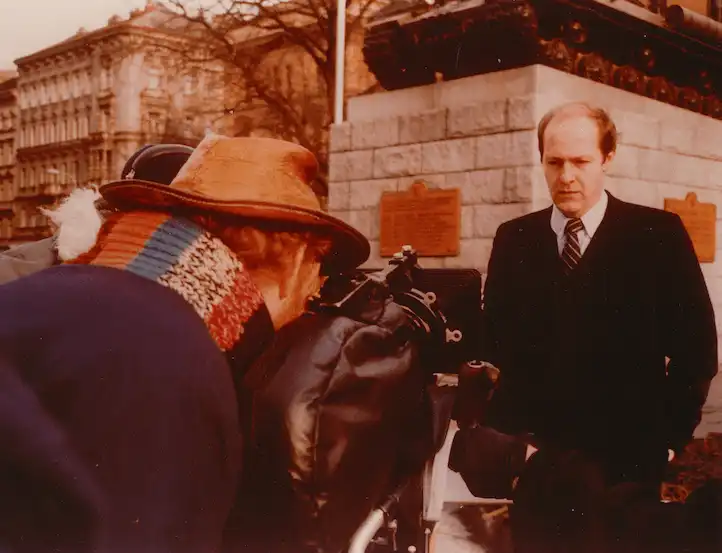
The decay of the system combined with was that of the empire. Moscow’s center hold over the periphery was eroding. In fact, Gorbachev’s spokesman called it the Sinatra doctrine, “go your own way”. If Ceauşescu wanted to continue, he continued; if Hungary wanted reforms, they had green light to introduce them. We show this breakdown in the film, but it is never explicit, only suggested by some that the system has no future. That is the message, but nobody anticipated that the system would crumble quite so brutally a year later. Neither the social sciences nor the Western political elites anticipated the system’s collapse. Our interviewees, at least, gave us keys to understanding the breakdown of the system, accelerated by delayed attempts to reform.
After 1989, we were asked if we wanted to add a section a “happy end” post script. Personally, I was reluctant because, firstly, everybody had rushed in there and there was a plethora of news reports and I was working on something else: the forthcoming democratic transition. But in any case, I thought it was a false undertaking, I would have added a conclusion to an open-ended story that had its own logic and which remained interesting from that perspective. You write a different story when you know how it ends.
However today we could go back to the same places visited on the eve of 1989 and explore not the emergence of democracy, but it is regression. To explain how the Other Europe is today another kind of “other”.
Where are the archives of The Other Europe today? What will happen to them? What are the materials that are accessible to the public or which will be soon accessible?
What’s the point of preserving all these film archives over 30 years on. Film stock that no one has used. Some universities or institutions buy archives, like the Hoover Institute at Stanford. They buy them and then make them accessible to researchers, but then the archives are based on the West coast of the United States. I wanted them to remain in Europe, and if possible, in Central Europe. I was lucky enough to meet the right person at the archives of the Imperial War Museum in London,(5) and because I am on the board of the Vaclav Havel library in Prague, it was not too difficult to persuade them that it would be good idea to have this under the auspices of the Havel Library, in partnership with the Czech Film archives. The latter was able to store the archive a start difitalising it. All that was in partnership with institutions from other Central European countries concerned by the film, with a subsidy from the Visegrad Fund and a subsidy from the representation of the EU in Prague. There are therefore Polish, Hungarian, German, etc. partner institutions that are interested in access to the documents.
For me this is immensely satisfying, not only because the archives are preserved, but also because they will now be digitalised and made available to researchers or for education purposes.
In August 2020, I gave a lecture to schoolteachers in the Czech Republic on the way in which these archives can be used for teaching European contemporary history. There are numerous possibilities. Of the long list of people I interviewed, most of them are unfortunately no longer with us. That is why it is important to archive them. All these interviews with protagonists who did not then have access to the public sphere will be made accessible in their entirety.
Do the interviews have English subtitles?
Most of the interviews are in the original language, for example the interview conducted with Lech Walesa, who speaks Polish, or with Havel in Czech are subtitled in English. We have English subtitles, transcripts and translations for the interviews used in the film.
This is when the word ‘documentary’ acquires a literal meaning. Most of dissidents, ,intellectuals, writers, artists but also people belonging to the system are dead today. I think that these interviews can also be seen as a complementary source material for those studying the history of this period. And this, I think, is justification enough for an academic to embark on such an adventure.
This was an unprecedented way of working for you.
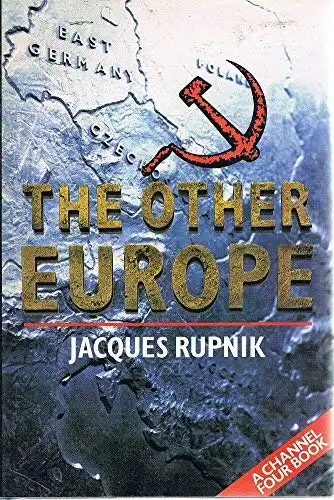
Indeed, but there was nevertheless a connection between the film and the book. The film was an intellectual construction in which puzzle pieces had to be put together. The book, like the film, was called The Other Europe,(6) and the contract covered both. I wrote the book immediately after filming,while we were editing it, drawing on the two years of fieldwork and the one hundred interviews conducted. The book was to come out at the same time as the film. So the deadline was very short, which which helps to concentrate the mind and was fortunate given what happened in the months that followed. In retrospect, it is probably the best thing I have written, I wrote it in one go, without worrying about footnotes. I had everything in my head. The structure of the book was the same as that of the film. I spent two years traveling around the region (at no cost to my academic base at CERI-Sciences po!), and the result is a book which is still on the reading lists of the better American and English universities.(7)
What is the future for the archives?
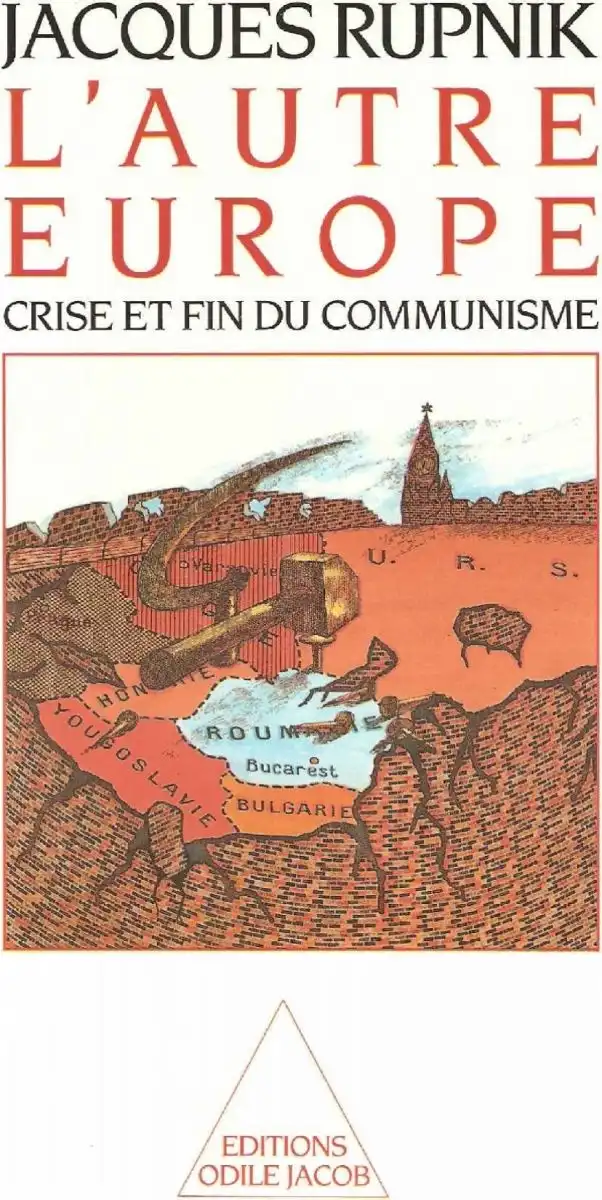
The archives will gradually be made available and used by scholars and institutions that are interested. Some will focus on material pertinent to their own country, but it can also be integrated into a broader regional perspective.
In Prague, on the 30th anniversary of the “Velvet Revolution”, the Havel library organised an event associated with the return of the archives. They screened the first part of the film, followed by extracts from certain interviews. They began with Havel, of course, followed by a debate with the audience; another screening was for students from the FAMU film school, i.e. for young people who were not born in 1989. Some of them discovered their history (and often their ignorance!), others revived memory debates about the old regime…
It may look like ancient history, but his turn of events means that the film was given a new lease of life, and so were the archives.
I think that the main issues raised by revisiting all that come down to the question of how do we do research on and in authoritarian regimes? Our colleague Fariba Adelkhah is today under house arrest, having been in prison in Tehran for simply wanting to do her job as a researcher. It is not without risks.
I was aware of these, admittedly limited, risks at the time, throughout my travels, even though they were not the same as our colleague faces in Iran. When you arrived at Warsaw airport in 1987, there were two police officers waiting for you. Everybody disembarked, and you were subject to a total body search, all the books and publications you were carrying were confiscated. I still have the list! You were constantly under pressure. At midnight someone came to knock on your hotel room door, supposedly “just to check you were there”. As soon as you arrived, they were watching you and wanted you to know it. When you left Warsaw, it was the same thing again. You were blocked, searched, interrogated. The aeroplane was blocked on the runway, and eventually left 40 minutes late. All that simply to intimidate, and this was one of the countries that was then considered the most open in the region.
When you cannot film or question people freely, you are obliged to reconstruct an image of reality, and that image is questionable. In fact, the image was criticised or at least debated, when the film came out. Some critics expressed their reservations – I had not given enough credit to Gorbachev’s reforms or the possibility of renewal of the system. I may have been wrong about Gorbachev’s intentions, but they were also wrong about the chances of his reforms. I did not predict the imminent collapse, but neither did they. They focused on the prospect of reform, while I thought the system was too antiquated to be reformed and did not think you could combine the reform of the system and that of the empire. My point was: “you’ve come 20 years too late. During the Prague Spring in 1968, perhaps, you could argue that an alternative model is possible, or at least plausible, but now it no longer is. Tocqueville’s brilliant insight: Belated reforms of a bad regime only accelerate the unravelling. You are paying the price for the tanks of August in Prague. Back then there may have been a possibility of a “third way”. But you should not confuse the ’68 utopia of “socialism with a human” with the illusion of democratic reform within the Communist Party of the Soviet Union. Anyway, twenty years later it was too late.
Interview by Corinne Deloy, english translation by Katharine Throssell.
Legend
Video 1 - Gabor Demszky
Video 2 - Vaclav Havel
Video 3 - Jana Starkova
More info…
- The Other Europe website
- Presentation by Jacques Rupnik of the digitalisation project for the interviews and documentaries of The Other Europe, Octobre 2020.
- Press release The Other Europe
Notes
- 1."Panorama" is an investigative tv documentary series launched by the BBC in 1953.
- 2.I was recruited by the BBC as a researcher. The BBC World Service, which has been broadcasting in 40 languages since the 1920s, used to have a specialised research service on the Soviet world (Current Affairs Research & Information Service) with archives dating back to the end of WWII, which were a remarkable resource. My field was Eastern Europe (not the USSR), and I had to write briefs and commentaries from my reading of the press in those countries, from radio transcripts that arrived on my desk every morning, from communist newspapers such as L’Unita (the organ of the Italian Communist Party), as well as various sources ranging from samizdat to news agencies. There was no internet, no fax, no free communication with any of these countries. I wrote background notes and once or twice a week I commented on developments in Eastern Europe. I arrived at the beginning of January 1977, the day Charter 77 was launched in Prague, and this was inevitably my first paper. Hence my nickname among some dissidents and exiles: “Our man at the BBC”.
- 3.Jacques Rupnik was born in Prague. He was also Special advisor to former President of the Republic Vaclav Havel.
- 4.See the interview with Vaclav Havel, https://www.othereurope.com/en/video/1000_vaclav-havel
- 5.Where the archives were previously held.
- 6.The book was published in English (The Other Europe, Orion Publishing, 1988) and in French (Jacques Rupnik, L'Autre Europe. Crise et fin du communisme, Odile Jacob, 1990)
- 7.Jacques Rupnik, The Other Europe, George Weidenfeld & Nicolson Ltd, London, 1988.
Follow us
Contact us
Media Contact
Coralie Meyer
Phone : +33 (0)1 58 71 70 85
coralie.meyer@sciencespo.fr
Corinne Deloy
Phone : +33 (0)1 58 71 70 68
corinne.deloy@sciencespo.fr
